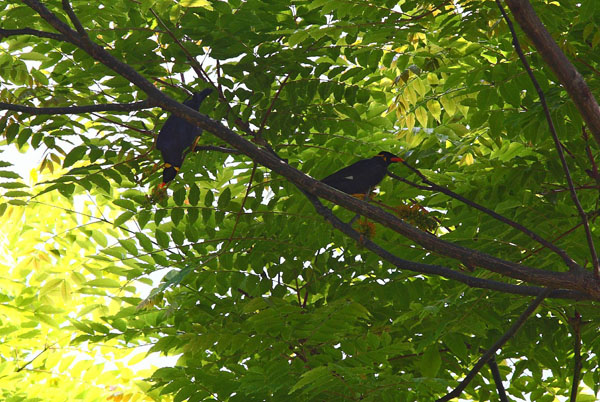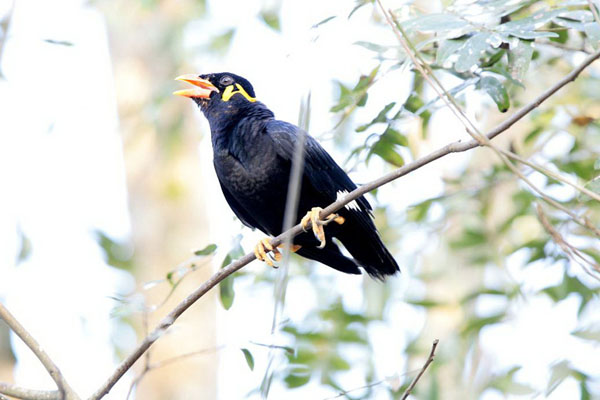Gracula religiosa
IUCN
LCBasic Information
Scientific classification
- name:Gracula religiosa
- Scientific Name:Gracula religiosa,Common Hill Myna,, Qinjile, Jiugong bird, Hainan myna, Hainan starling, Indian grek
- Outline:Songbird
- Family:Passeriformes Sturnidae Myna
Vital signs
- length:234-304mm
- Weight:165-258g
- lifetime:10-12years
Feature
After training, they can also imitate human language and learn to sing simple songs.
Distribution and Habitat
In China, it is found in southeastern Tibet, western and southern Yunnan, southwestern Guangxi and Hainan Island, and introduced populations are found in Hong Kong. Abroad, it is distributed from northeastern South Asia to Indochina, the Malay Peninsula, the Nicobar Islands, the Andaman Islands, and south to the Greater Sunda and Lesser Sunda Islands.
It mainly inhabits secondary forests, evergreen broad-leaved forests, deciduous and broad-leaved forests, bamboo forests and mixed forests in low mountains and hills and plains at the foot of the mountains. It is more common in sparse forests at the edge of forests, and is also found in small woods near cultivated land, wilderness and villages.
Appearance
The whole body is black with a bluish purple luster. The back of the head has large patches of bright yellow skin and wattles on both sides, which is different from other starlings. The base of the primary flight feathers is white, forming obvious blocky wing spots. The iris is dark brown with light eye circles, the beak is orange-red with a yellow tip, and the feet are bright yellow.
Details
The characteristic of the myna is the orange-yellow wattles and hems on the sides of the head, which are similar for males and females. It is good at singing, with loud and clear voices, and can imitate and produce a variety of melodious tones. It often gathers in small groups of 3-5, and in winter it gathers in large groups of 10-20. It also often forages on fruit trees with starlings and other birds. It has strong social behavior. If one of its group sings, the other birds will linger and sing nearby for a long time. The song is crisp, loud, and varied. It is better at singing during the breeding period, and often responds to each other. It is varied, and can imitate the singing of other birds and even learn simple human language.

Mainly feed on insects such as locusts, grasshoppers, and termites, and also eat fruits and seeds of plants such as figs and figs. They love to eat wild fruits. During the ripening period of fruits on fruit trees, especially the ripening season of figs or similar fleshy fruits, they often visit in large groups with other fruit-eating birds. They also eat insects such as grasshoppers and termites.
The breeding season is from April to June. They nest in trees and often breed in pairs or 2-3 pairs on the same tree or adjacent trees. The nest is mostly chosen in the natural tree hole on the dead tree or decaying tree. It often uses the old nest, and can also use its mouth to expand the small hole and clean out the wood in the hole. The nest is sometimes padded with dead grass leaves, feathers and snake skin, and sometimes without any padding.

Due to over-capture and deteriorating environmental conditions, the population of mynahs is decreasing day by day. There are no reports in the southern part of Guangxi where there were records of distribution. It may have become extinct in Guangxi. It is also rare in Yunnan. Only Hainan Island has a certain population, but it is not abundant, so it should be protected.
Listed in China's "National Key Protected Wildlife List" (February 5, 2021) at level 2.








